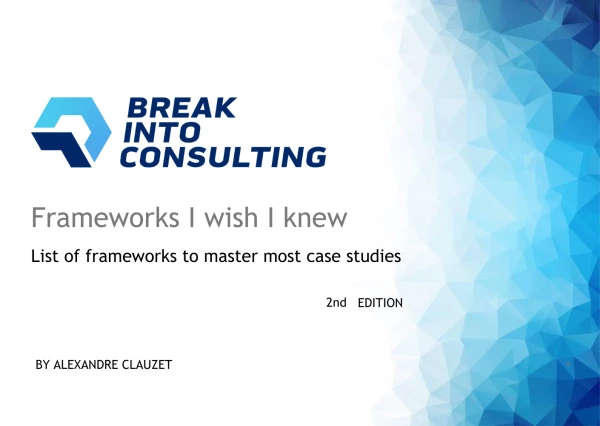Hello,
I'm currently in the early process of preparing for my consulting interview, I'm wondering for the M&A case: Client wants to acuqire A, ask you if it's a good idea.
I will look at company A to see what value they will bring to the client, their market share, competitions and synergies. Do I need to look at the client? Or this whole case is about investing the aquisition target?
Appriciate fo ryour reply as I'm not MBA background and very new to cases.














